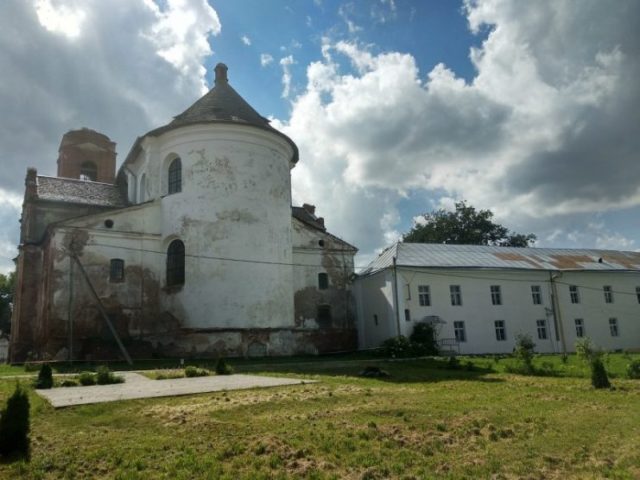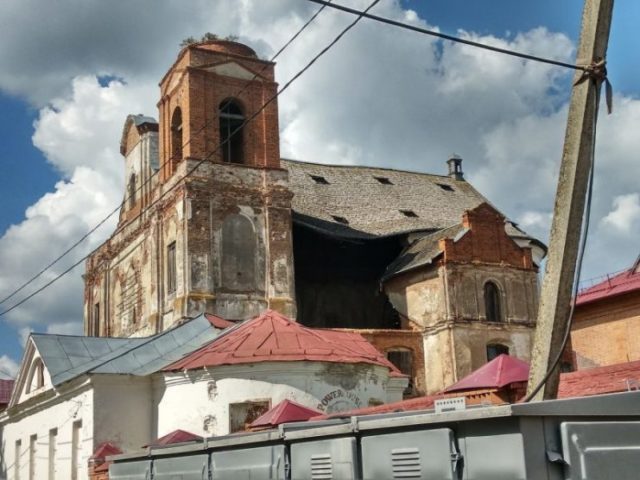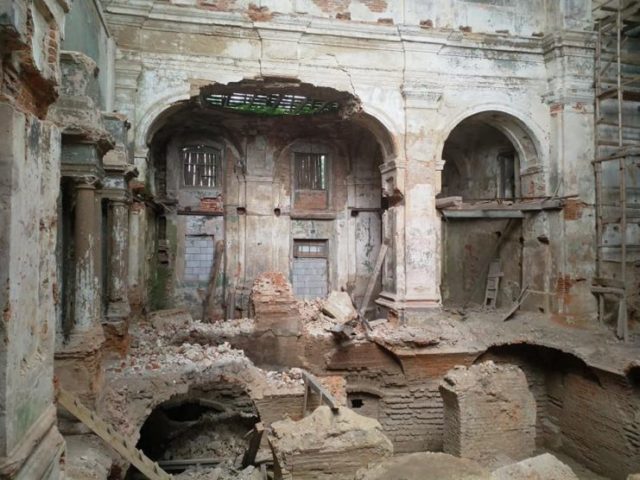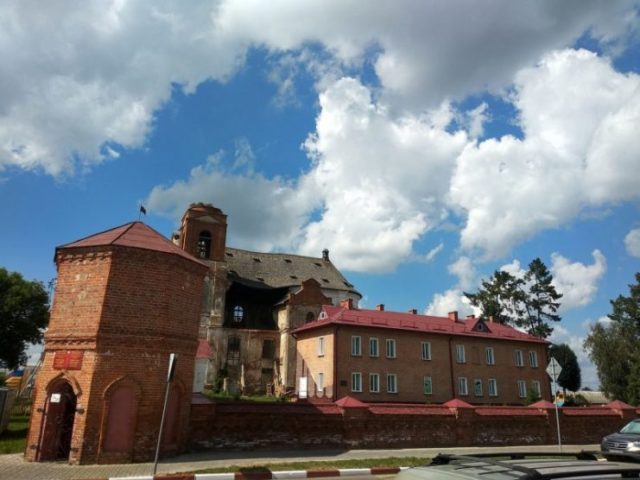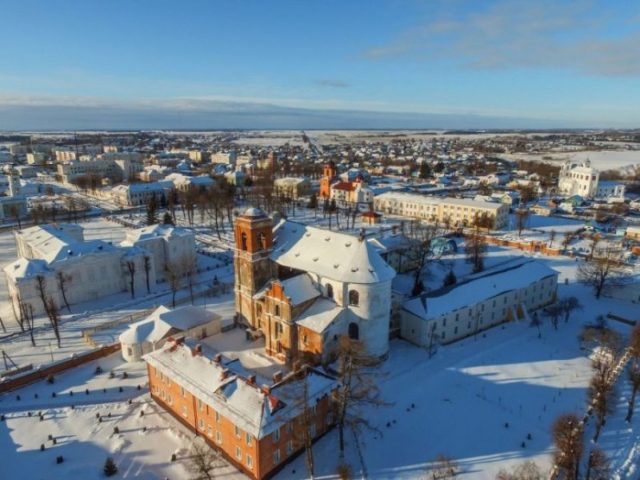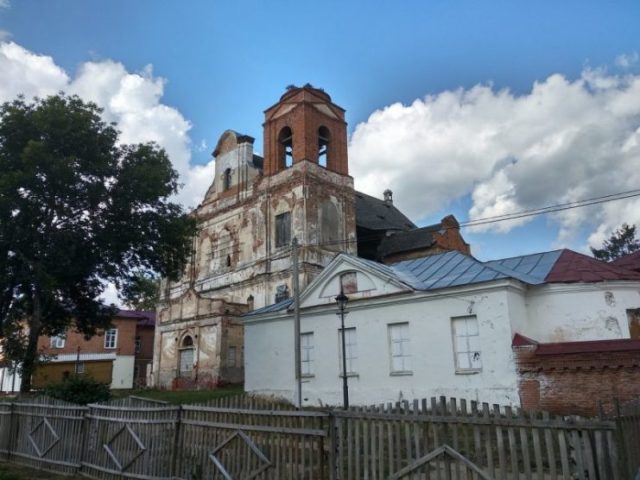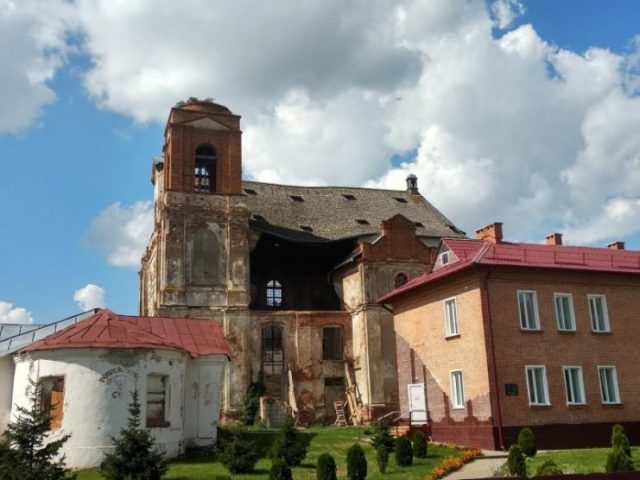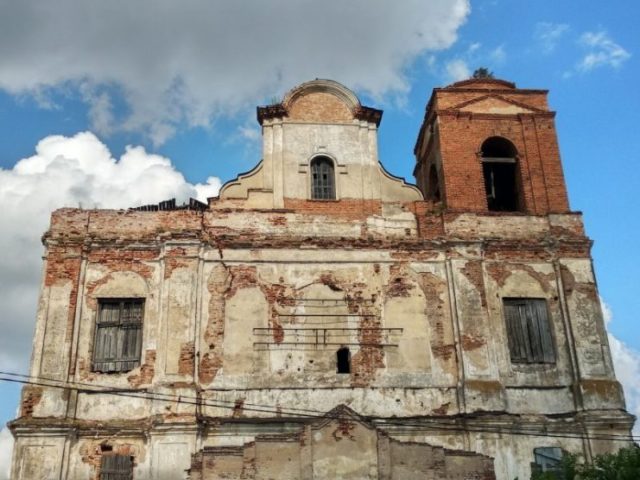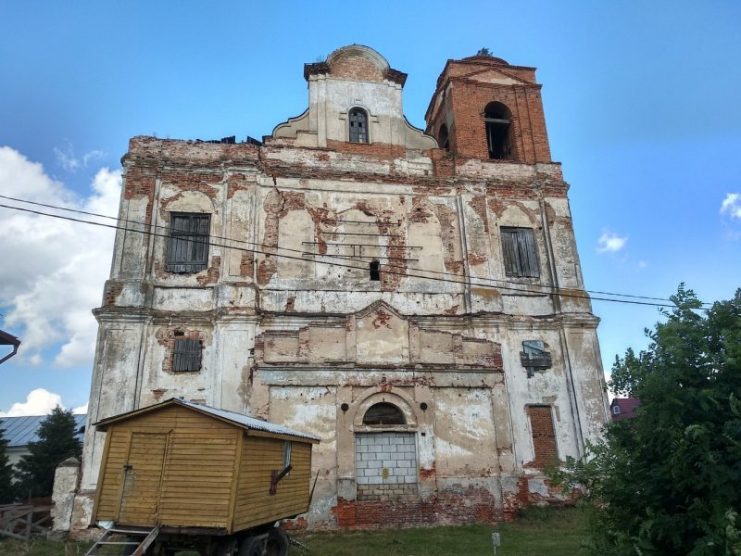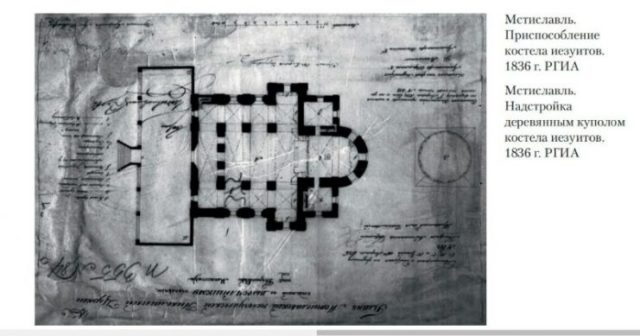Mstislavl is one of the most ancient cities in the Republic of Belarus. It is mentioned in the early 12th century Ipatiev Chronicle as one of the defensive parts of the Smolensk Principality. According to the chronicle, Prince Rostislav Mstislavovich, who was the founder of the city of Smolensk and the grandson of Vladimir Monomakh, named it in honor of his father, Mstislav the Great.
Currently, on one of the main streets of Mstislavl one can see a half-destroyed building – the Jesuit Church of St. Michael the Archangel, built in 1637. Its construction continued until the end of the 16th century. The church is a tall building in the style of the “Vilensky” baroque.
In 1690, a Jesuit monastery was founded in Mstislavl. Jesuits are the spiritual order of the Roman Catholic Church. This monastery included the Church of St. Michael the Archangel, the building of the Collegium, pharmacies, and service buildings.
In 1747-1750, the famous architect Johann Gaubitz reconstructed the Jesuit Church of St. Michael the Archangel. Incidentally, Gaubitz was also engaged in the reconstruction of another temple in Mstislavl. At present, the buildings of the Jesuit Collegium are included in the list of historical and cultural treasures of the Republic of Belarus.
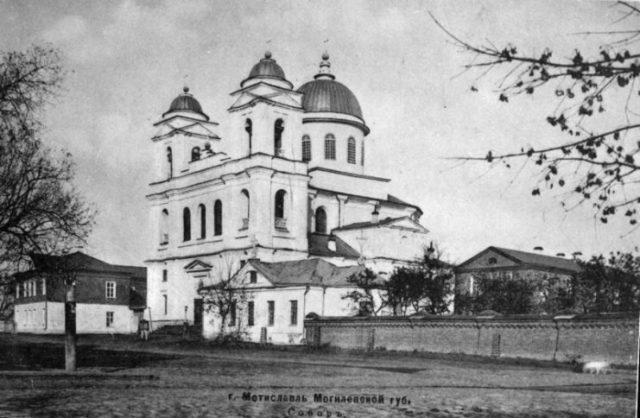
Throughout the the 17th-19th centuries, the Jesuit monastery was a rich and prosperous place. There is a story that the Russian Empress Catherine II once visited Mstislavl. The Jesuit monks wanted to do something worthy of a meeting with the empress, and crafted an unusual plan. Two boys, portraying divine angels, were lowered on ropes and laid a laurel wreath on Catherine’s head. This reception made a great impression on her, and she gave the monks a lot of money.
The children of rich and noble people were taught theology, science and Latin in the Collegium. The monastery pharmacy sold plants and medicines that were difficult to acquire in other places.
In 1842, the monastery passed into the possession of the Orthodox Church. Later, the Church of St. Michael the Archangel was rebuilt as the Orthodox St. Nicholas Cathedral. The appearance of the temple and its original artistic expressiveness were changed according to the canons of the Orthodox Church. In the middle of the 19th century, chapels and a fence made of red brick were built in the corners of the cathedral.
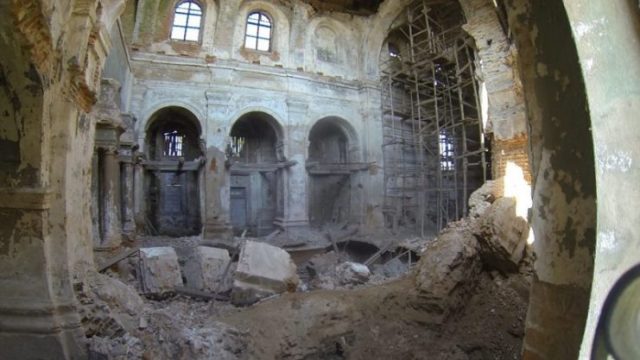
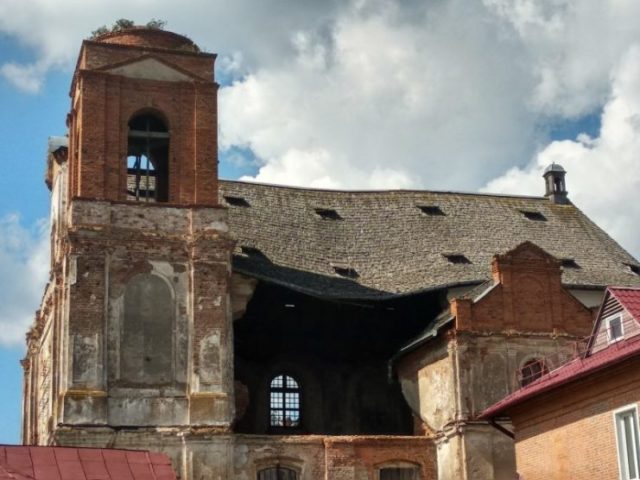
After World War II, the church building was half destroyed, but it was later restored. After that, a house of culture and a cinema were built, and then later a boarding school. In 1992, the Ministry of Culture of the Republic of Belarus began restoration of the church, but the funding ceased in 1995. The church building was not properly preserved and has been gradually crumbling.
Now the church is in a dilapidated condition. At the end of December 2017, the wall of the side facade of the building, and part of the roof and brick ceiling, collapsed inside the building. The main factor that prevents rehabilitation is the lack of funding. One of the native townspeople has created a charity account to raise funds, and any interested person can make a donation.
